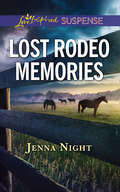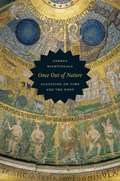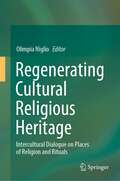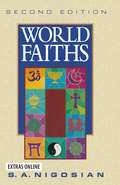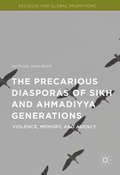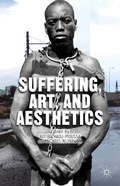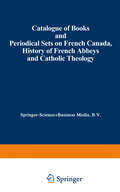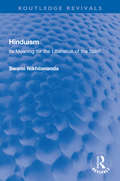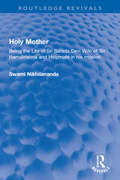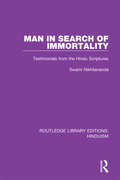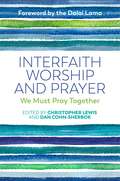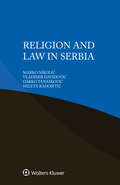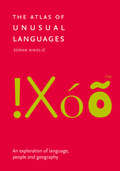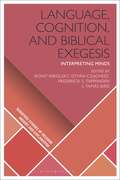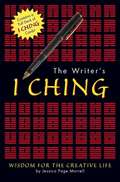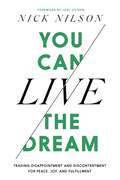- Table View
- List View
Lost Rodeo Memories (Mills And Boon Love Inspired Suspense Ser.)
by Jenna NightWith a stalker in the shadows… She needs a protector at her side.
Once Out of Nature: Augustine on Time and the Body
by Andrea NightingaleOnce Out of Nature offers an original interpretation of Augustine’s theory of time and embodiment. Andrea Nightingale draws on philosophy, sociology, literary theory, and social history to analyze Augustine’s conception of temporality, eternity, and the human and transhuman condition. In Nightingale’s view, the notion of embodiment illuminates a set of problems much larger than the body itself: it captures the human experience of being an embodied soul dwelling on earth. In Augustine’s writings, humans live both in and out of nature—exiled from Eden and punished by mortality, they are “resident aliens” on earth. While the human body is subject to earthly time, the human mind is governed by what Nightingale calls psychic time. For the human psyche always stretches away from the present moment—where the physical body persists—into memories and expectations. As Nightingale explains, while the body is present in the here and now, the psyche cannot experience self-presence. Thus, for Augustine, the human being dwells in two distinct time zones, in earthly time and in psychic time. The human self, then, is a moving target. Adam, Eve, and the resurrected saints, by contrast, live outside of time and nature: these transhumans dwell in an everlasting present. Nightingale connects Augustine’s views to contemporary debates about transhumans and suggests that Augustine’s thought reflects our own ambivalent relationship with our bodies and the earth. Once Out of Nature offers a compelling invitation to ponder the boundaries of the human.
Once Out of Nature: Augustine on Time and the Body
by Andrea NightingaleOnce Out of Nature offers an original interpretation of Augustine’s theory of time and embodiment. Andrea Nightingale draws on philosophy, sociology, literary theory, and social history to analyze Augustine’s conception of temporality, eternity, and the human and transhuman condition. In Nightingale’s view, the notion of embodiment illuminates a set of problems much larger than the body itself: it captures the human experience of being an embodied soul dwelling on earth. In Augustine’s writings, humans live both in and out of nature—exiled from Eden and punished by mortality, they are “resident aliens” on earth. While the human body is subject to earthly time, the human mind is governed by what Nightingale calls psychic time. For the human psyche always stretches away from the present moment—where the physical body persists—into memories and expectations. As Nightingale explains, while the body is present in the here and now, the psyche cannot experience self-presence. Thus, for Augustine, the human being dwells in two distinct time zones, in earthly time and in psychic time. The human self, then, is a moving target. Adam, Eve, and the resurrected saints, by contrast, live outside of time and nature: these transhumans dwell in an everlasting present. Nightingale connects Augustine’s views to contemporary debates about transhumans and suggests that Augustine’s thought reflects our own ambivalent relationship with our bodies and the earth. Once Out of Nature offers a compelling invitation to ponder the boundaries of the human.
Once Out of Nature: Augustine on Time and the Body
by Andrea NightingaleOnce Out of Nature offers an original interpretation of Augustine’s theory of time and embodiment. Andrea Nightingale draws on philosophy, sociology, literary theory, and social history to analyze Augustine’s conception of temporality, eternity, and the human and transhuman condition. In Nightingale’s view, the notion of embodiment illuminates a set of problems much larger than the body itself: it captures the human experience of being an embodied soul dwelling on earth. In Augustine’s writings, humans live both in and out of nature—exiled from Eden and punished by mortality, they are “resident aliens” on earth. While the human body is subject to earthly time, the human mind is governed by what Nightingale calls psychic time. For the human psyche always stretches away from the present moment—where the physical body persists—into memories and expectations. As Nightingale explains, while the body is present in the here and now, the psyche cannot experience self-presence. Thus, for Augustine, the human being dwells in two distinct time zones, in earthly time and in psychic time. The human self, then, is a moving target. Adam, Eve, and the resurrected saints, by contrast, live outside of time and nature: these transhumans dwell in an everlasting present. Nightingale connects Augustine’s views to contemporary debates about transhumans and suggests that Augustine’s thought reflects our own ambivalent relationship with our bodies and the earth. Once Out of Nature offers a compelling invitation to ponder the boundaries of the human.
Once Out of Nature: Augustine on Time and the Body
by Andrea NightingaleOnce Out of Nature offers an original interpretation of Augustine’s theory of time and embodiment. Andrea Nightingale draws on philosophy, sociology, literary theory, and social history to analyze Augustine’s conception of temporality, eternity, and the human and transhuman condition. In Nightingale’s view, the notion of embodiment illuminates a set of problems much larger than the body itself: it captures the human experience of being an embodied soul dwelling on earth. In Augustine’s writings, humans live both in and out of nature—exiled from Eden and punished by mortality, they are “resident aliens” on earth. While the human body is subject to earthly time, the human mind is governed by what Nightingale calls psychic time. For the human psyche always stretches away from the present moment—where the physical body persists—into memories and expectations. As Nightingale explains, while the body is present in the here and now, the psyche cannot experience self-presence. Thus, for Augustine, the human being dwells in two distinct time zones, in earthly time and in psychic time. The human self, then, is a moving target. Adam, Eve, and the resurrected saints, by contrast, live outside of time and nature: these transhumans dwell in an everlasting present. Nightingale connects Augustine’s views to contemporary debates about transhumans and suggests that Augustine’s thought reflects our own ambivalent relationship with our bodies and the earth. Once Out of Nature offers a compelling invitation to ponder the boundaries of the human.
Regenerating Cultural Religious Heritage: Intercultural Dialogue on Places of Religion and Rituals
by Olimpia NiglioThis book introduces important reflections on understanding the meaning of cultural-religious heritage in an international context and their relationship with issues of sustainability at the local community level. Through a holistic approach, the book charts new courses in analyzing different cultural policies and methods for preserving and enhancing cultural heritage. Stemming from an intercultural seminar promoted by the International Scientific Committee Places of Religion and Ritual (ICOMOS PRERICO) under the theme of “Reuse and regenerations of cultural-religious heritage in the world: Comparison among cultures,” the book examines the scientific diplomacy and cultural strategies promoted by countries in dialogue with the UN 2030 Agenda, as well as Agenda 21 for Culture. The book seeks to reinforce the value of local cultural policies for supporting and enhancing cultural-religious heritage through specific programs and collaborations in dialogue with government policies. This collection is relevant to scholars working in areas relating to cultural heritage, religious heritage, architectural restoration, protection of the local inheritances, law, and management of the cultural sites.
World Faiths
by S.A. NigosianWorld Faiths is a brief introduction to the major world religions. The book provides detailed coverage of the historical development of different religious traditions, and, for each religion, presents issues of faith from the perspective of the believer.
Magic and Divination in the Old Testament
by Solomon NigosianHumans, since time immemorial, have tried to discover and influence the will of spirits and deities that they believed to be in charge of their lives. As a result, all cultures have produced certain special individuals thought to be closely in touch with the powers of the supernatural world. Was this true of ancient Israel? If so, who were the occult experts and what techniques were used by them? This study explores the many practices and rituals associated with magic and divination among the ancient Israelites as documented in the Old Testament. Seeking omens and consulting seers and diviners were widely practiced, though in the biblical text such activities are roundly condemned. Solomon Nigosian's scholarly work is written in language that makes it absorbing reading for both the biblical scholar and the layperson.
Middle Eastern Founders of Religion: Moses, Jesus, Muhammad, Zoroaster and Bahaullah (The Sussex Library of Religious Beliefs & Practice)
by Solomon NigosianThis book presents an academic introduction to the life and teachings of five Middle Eastern founders of religion -- five individuals whose systems of faith, thought, and action have won the allegiance of millions. All believed to have experienced a personal encounter with the divine -- a "voice" directly from the "beyond" -- to proclaim God's message to the community or people to which they belonged. All attracted followers and opponents. Similarities in their religious outlook abound; but differences between the five pervade their approach toward society and culture, with issues of law, war, women, morality, ethics, the kingdom of God, life after death, and eternal judgment distinguishing their respective beliefs. An Introduction provides an overview of the political history of the Middle East based on four periods (Early, Persian, Hellenistic, and Roman) and a brief description of the surviving religious traditions of the Middle East (including a proposal regarding the nature of so-called "selected" individuals). Five chapter texts separately address each religious founder from the viewpoint of readers from the Judaic and Christian traditions in terms of the religious world into which each individual appeared; the traditional account as presented by available sources or evidences; the reliability of the available sources or evidences for reconstructing their biographies; and a critical assessment of both the sources or evidences and the traditional account. A concluding chapter compares the similarities and differences of the received divine messages, and notes that no new message has ever succeeded in shaking off entirely the influence of the faith from which it arose. The work has been specifically designed for student adoption in Religious Studies.
The Precarious Diasporas of Sikh and Ahmadiyya Generations: Violence, Memory, and Agency (Religion and Global Migrations)
by Michael NijhawanThis book examines the long-term effects of violence on the everyday cultural and religious practices of a younger generation of Ahmadis and Sikhs in Frankfurt, Germany and Toronto, Canada. Comparative in scope and the first to discuss contemporary articulations of Sikh and Ahmadiyya identities within a single frame of reference, the book assembles a significant range of empirical data gathered over ten years of ethnographic fieldwork. In its focus on precarious sites of identity formation, the volume engages with cutting-edge theories in the fields of critical diaspora studies, migration and refugee studies, religion, secularism, and politics. It presents a novel approach to the reading of Ahmadi and Sikh subjectivities in the current climate of anti-immigrant movements and suspicion against religious others. Michael Nijhawan also offers new insights into what animates emerging movements of the youth and their attempts to reclaim forms of the spiritual and political.
Suffering, Art, and Aesthetics
by Michael Nijhawan Ratiba Hadj-MoussaHow do we conceptualize the relationship between suffering, art, and aesthetics from within the broader framework of social, cultural, and political thought today? This book brings together a range of intellectuals from the social sciences and humanities to speak to theoretical debates around the questions of suffering in art and suffering and art.
Catalogue of Books and Periodical Sets on French Canada, History of French Abbeys and Catholic Theology
by Martinus NijhoffHinduism: Its Meaning for the Liberation of the Spirit (Routledge Revivals)
by Swami NikhilanandaFirst Published in 1959, Hinduism written specifically for the modern readers describes and interprets one of the world’s chief religions. For thousands of years Indian sages have speculated on man, creation, and the universe. One result has been an astonishing amount of myth and ritual, of art, asceticism, and philosophy. Swami Nikhilananda provides a brief account of Hinduism in both its theoretical and its practical aspects. It is written mainly from the point of view of non-dualism which the author argues is the highest achievement of India’s mystical insights and philosophical speculation, and her real contribution to world culture. The volume deals with themes like Hindu Ethics; Karma-Yoga; Bhakti-Yoga; Jnana- Yoga; Raja-Yoga; and Tantra. This complete survey of Hindu beliefs and customs is indispensable for scholars and researchers of Hinduism, religion, Indian philosophy, Indian culture, and heritage.
Hinduism: Its Meaning for the Liberation of the Spirit (Routledge Revivals)
by Swami NikhilanandaFirst Published in 1959, Hinduism written specifically for the modern readers describes and interprets one of the world’s chief religions. For thousands of years Indian sages have speculated on man, creation, and the universe. One result has been an astonishing amount of myth and ritual, of art, asceticism, and philosophy. Swami Nikhilananda provides a brief account of Hinduism in both its theoretical and its practical aspects. It is written mainly from the point of view of non-dualism which the author argues is the highest achievement of India’s mystical insights and philosophical speculation, and her real contribution to world culture. The volume deals with themes like Hindu Ethics; Karma-Yoga; Bhakti-Yoga; Jnana- Yoga; Raja-Yoga; and Tantra. This complete survey of Hindu beliefs and customs is indispensable for scholars and researchers of Hinduism, religion, Indian philosophy, Indian culture, and heritage.
Holy Mother: Being the Life of Sri Sarada Devi Wife of Sri Ramakrishna and Helpmate in his mission (Routledge Revivals)
by Swami NikhilanandaFirst Published in 1963, Holy Mother presents the life and teachings of an extraordinary saint of modern India, who lived outwardly the life of an ordinary Hindu woman. Sri Sarada Devi (1853-1920) was brought up in poverty but also in contentment. She gained her sainthood not through unusual austerities, but through regular practice of prayer and meditation, utter devotion in the service of her husband, and discharging her duties towards her demanding worldly-minded relatives. Yet her spiritual experiences were as deep as those of Sri Ramakrishna (1836-1886). Her life was a demonstration of the inner peace that comes from communication with God, even to one who is occupied with the activities of the world. Sri Ramakrishna trained her for her future role as his spiritual successor and through her he demonstrated the Motherhood of God. Her advent acted as a leaven silently raising the newly awakened consciousness of womanhood everywhere. This book is indispensable for scholars and researchers of Hinduism, religion, Indian philosophy, Indian culture, and heritage.
Holy Mother: Being the Life of Sri Sarada Devi Wife of Sri Ramakrishna and Helpmate in his mission (Routledge Revivals)
by Swami NikhilanandaFirst Published in 1963, Holy Mother presents the life and teachings of an extraordinary saint of modern India, who lived outwardly the life of an ordinary Hindu woman. Sri Sarada Devi (1853-1920) was brought up in poverty but also in contentment. She gained her sainthood not through unusual austerities, but through regular practice of prayer and meditation, utter devotion in the service of her husband, and discharging her duties towards her demanding worldly-minded relatives. Yet her spiritual experiences were as deep as those of Sri Ramakrishna (1836-1886). Her life was a demonstration of the inner peace that comes from communication with God, even to one who is occupied with the activities of the world. Sri Ramakrishna trained her for her future role as his spiritual successor and through her he demonstrated the Motherhood of God. Her advent acted as a leaven silently raising the newly awakened consciousness of womanhood everywhere. This book is indispensable for scholars and researchers of Hinduism, religion, Indian philosophy, Indian culture, and heritage.
Man in Search of Immortality: Testimonials from the Hindu Scriptures (Routledge Library Editions: Hinduism #8)
by Swami NikhilanandaThis book, first published in 1968, comprises five articles on the immortality of the soul. According to Hindu tradition this immortality cannot be proved by the scientific method of reasoning – it is based upon scriptural evidence and on the direct experience of enlightened souls. These articles examine the Hindu tradition and provide reasoned support to the scriptures and experiences.
Man in Search of Immortality: Testimonials from the Hindu Scriptures (Routledge Library Editions: Hinduism #8)
by Swami NikhilanandaThis book, first published in 1968, comprises five articles on the immortality of the soul. According to Hindu tradition this immortality cannot be proved by the scientific method of reasoning – it is based upon scriptural evidence and on the direct experience of enlightened souls. These articles examine the Hindu tradition and provide reasoned support to the scriptures and experiences.
Interfaith Worship and Prayer: We Must Pray Together
by Nikky-Guninder Kaur Singh Jay Atkinson Aaron Rosen Vishvapani Blomfield Alan Brill Hugh Ellis Usama Hasan Marcus Braybrooke Alan Race Carolyn Rosen Sheryl Kujawa-Holbrook Pashaura Singh Lucy Soucek Ibrahim Mogra Wendi Momen George Ballentyne Feargus O’Connor Yasuhiro Tanaka Yoshinobu Miyake Maneck Bhujwala Behram Deboo Jehangir Sarosh Bogodo Seelawimala Natubhai Shah Vinod Kapashi Hebron L Ndlovu Nokuzola Mndende Shaunaka Rishi Das Anantanand RambachanThis ground-breaking book contains contributions from 12 different religious traditions: Hinduism, African Traditional Religion, Judaism, Jainism, Buddhism, Zoroastrianism, Shintoism, Christianity, Islam, Sikhism, Unitarianism and Bahá'í. Interfaith worship and prayer can be complex, but this book demonstrates that in a world of many cultures and religions, there is an urgent need for religions to come together with trust and communication, especially when there is a crisis. Full of insights and examples of practice, the book demonstrates how religions can be a powerful means of unity and compassion. The book opposes the 'clash of civilisations' model as a way of interpreting the world and promotes peace, hope, and the possibility of cooperation. Religious believers can be sincere and committed to their own faith, while recognising the need to stand firmly together with members of other religious traditions.
Religion and Law in Serbia
by Marko Nikolić Vladimir Davidović Darko Tanasković Mileta Radojević<span style="mso-fareast-font-family:Times-Roman;mso-bidi-font-family:Times-Roman; color:black;mso-ansi-language:EN-GB">Derived from the renowned multi-volume <span style="mso-fareast-font-family:Times-Roman;mso-bidi-font-family:Times-Roman; color:black;mso-ansi-language:EN-GB">International Encyclopaedia of Laws<span style="mso-fareast-font-family:Times-Roman;mso-bidi-font-family:Times-Roman; color:black;mso-ansi-language:EN-GB">, this convenient resource provides systematic information on how Serbia deals with the role religion plays or can play in society, the legal status of religious communities and institutions, and the legal interaction among religion, culture, education, and media. <span style="mso-fareast-font-family:Times-Roman;mso-bidi-font-family:Times-Roman; color:black;mso-ansi-language:EN-GB">After a general introduction describing the social and historical background, the book goes on to explain the legal framework in which religion is approached. Coverage proceeds from the principle of religious freedom through the rights and contractual obligations of religious communities; international, transnational, and regional law effects; and the legal parameters affecting the influence of religion in politics and public life. Also covered are legal positions on religion in such specific fields as church financing, labour and employment, and matrimonial and family law. A clear and comprehensive overview of relevant legislation and legal doctrine make the book an invaluable reference source and very useful guide. <span style="font-size:12.0pt;font-family:"Times New Roman",serif; mso-fareast-font-family:Times-Roman;mso-bidi-font-family:Times-Roman; color:black;mso-font-kerning:.5pt;mso-ansi-language:EN-GB;mso-fareast-language: HI;mso-bidi-language:HI">Succinct and practical, this book will prove to be of great value to practitioners in the myriad instances where a law-related religious interest arises in Serbia. Academics and researchers will appreciate its value as a thorough but concise treatment of the legal aspects of diversity and multiculturalism in which religion plays such an important part.
The Atlas of Unusual Languages: An Exploration Of Language, People And Geography
by Zoran Nikolic Collins BooksWe communicate through the spoken and written word and language has evolved over the centuries. Many languages have survived although only in small pockets throughout the world. This book explores a selection of those languages.
Language, Cognition, and Biblical Exegesis: Interpreting Minds (Scientific Studies of Religion: Inquiry and Explanation)
by Ronit Nikolsky István Czachesz Frederick S. Tappenden Tamás BiróWhat role do texts play in religious practice? What is the relationship between these texts and cognition? Are some texts more successful because they are better adapted to our cognitive structures? Why is biblical interpretation necessary, and what is the cognitive process behind it? This book considers such questions, and fills the gap in research on religious texts and narratives in the cognitive science of religion.The study of ancient religions and biblical studies are dominated by textual evidence. However, the cognitive science of religion is lacking significant research on the language and textual interpretation of this literature. This book presents a systematic attempt to redefine the interpretation of religious texts in a cognitive framework, providing concrete textual analysis on a broad selection of biblical passages. It explores the ways that cognitive approaches to language and textual interpretation expand the disciplines of the cognitive science of religion and biblical studies.This book brings together methodology from the cognitive sciences, linguistics, philology, biblical studies, and religious studies, to offer a new perspective for biblical studies and cognitive sciences. It presents a renewed vision of textual interpretation - one that aligns hermeneutical reflection with our cognitive capacities.
Language, Cognition, and Biblical Exegesis: Interpreting Minds (Scientific Studies of Religion: Inquiry and Explanation)
by Ronit Nikolsky István Czachesz Frederick S. Tappenden Tamás BiróWhat role do texts play in religious practice? What is the relationship between these texts and cognition? Are some texts more successful because they are better adapted to our cognitive structures? Why is biblical interpretation necessary, and what is the cognitive process behind it? This book considers such questions, and fills the gap in research on religious texts and narratives in the cognitive science of religion.The study of ancient religions and biblical studies are dominated by textual evidence. However, the cognitive science of religion is lacking significant research on the language and textual interpretation of this literature. This book presents a systematic attempt to redefine the interpretation of religious texts in a cognitive framework, providing concrete textual analysis on a broad selection of biblical passages. It explores the ways that cognitive approaches to language and textual interpretation expand the disciplines of the cognitive science of religion and biblical studies.This book brings together methodology from the cognitive sciences, linguistics, philology, biblical studies, and religious studies, to offer a new perspective for biblical studies and cognitive sciences. It presents a renewed vision of textual interpretation - one that aligns hermeneutical reflection with our cognitive capacities.
The Writer's I Ching: Wisdom for the Creative Life
by Elaura Niles Jessica MorrellThe writing life is solitary and challenging, and it takes far more than creativity to become a commercial success. The Writer's I Ching uses the ancient Chinese divination system to provide writers with help mastering the business of writing and choosing the most propitious times to take action. Because writing educators created the book, it also teaches the storyteller and non-fiction craft with lessons suitable for both beginners and seasoned professionals.This unique presentation of the I Ching features a complete deck of 64 cards bound into the book itself. The writer poses a question about how to proceed on a specific fiction or non-fiction project, negotiation, or business matter. He draws an I Ching card and turns to the proper page for the interpretation of that card. Many cases of writer's block have been cured and flashes of insight gained through this simple technique. The I Ching dates back to before Christ and counts among its devotees Confucius, Albert Einstein, and Bob Dylan.
You Can Live the Dream: Trading Disappointment and Discontentment for Peace, Joy and Fulfillment
by Nick NilsonA National Bestseller! Start living the life of your dreams today with the help of this inspiring guidebook from the Associate Pastor at Lakewood Church as he shows how to stop delaying and start enjoying the life you have right now. Everyone has dreams. Usually, they look like a set of achievements: a dream house, a dream job, a dream family, a dream vacation… However, in pursuing them, we often become disgruntled and disheartened as challenges, setbacks, and opposition come our way. We get stuck focusing on what we don&’t have and where we want to be. Nick Nilson, Associate Pastor at Lakewood Church, offers a different approach to overcome these challenges: a change of perspective. What if we stopped focusing on what we lack, and instead focused on what we do have, and the possibilities our life currently offers us? What would change if you truly believed that God was in the middle of your troubles, disappointment and heartache and actually working all things out for your good!? Imagine if your dream wasn&’t a destination you chased , but a mindset you chose? You Can Live the Dream outlines how readers can harness the power of perspective in every aspect of their lives. Recognizing that you don&’t have to wait to live the dream, you can live your dream now.
